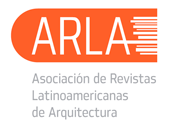HERRAMIENTAS PARA EL ANÁLISIS MORFOLÓGICO DE FABRA I COATS EN BARCELONA. PROCESAMIENTO DE IMÁGENES A PARTIR DE LA TECNOLOGÍA DE ESCÁNER LÁSER TERRESTRE
Resumen
En este artículo se plantea una metodología para el análisis morfológico de fachadas patrimoniales a partir de un levantamiento con la Tecnología de Escáner Láser Terrestre TLS, tanto desde un punto de vista tridimensional, como del desdoblamiento de las fachadas en 2D y 2.5D, manteniendo en todo momento el control de la información de partida, su transformación para ser explotada en diversos formatos, con objetivos específicos, a diferentes escalas, desde el nivel arquitectónico con deformaciones de fachadas y análisisde texturas hasta la identificación del relieve de los materiales, como una herramienta que amplía la información para ser interpretada por especialistas de diversas disciplinas relacionadas a la conservación del bien patrimonial. El caso del estudio propuesto, es un ejemplo destacado del patrimonio Industrial de Cataluña, las calderas de Fabra i Coats, las cuales fueron documentadas utilizando un escáner láser Faro Focus3D.
ABSTRACT
This article presents a methodology for the morphological analysis of heritage facades, from a survey with the TLS Terrestrial Laser Scanner Technology, both from a three dimensional point of view and the splitting of the facades in 2D and 2.5D, keeping at all times the control of the starting information, its transformation to be exploited in various formats, with specific goals, at different scales, from the architectural level with deformed facades and analysis of textures, to the identification of the relief of materials, as a tool that extends the information to be interpreted by specialists in various disciplines related to the conservation of the heritage. The proposed case study is an outstanding example of industrial heritage in Catalonia, the boilers of Fabra i Coats, which were documented using a Faro Focus3D laser scanner.
Referencias
Buill, F. (2009). Caracterización geométrica con técnicas ópticas 3D aplicadas al modernismo en Cataluña. [Tesis doctoral]. Comunicación visual en arquitectura y diseño. BarcelonaTech: Universitat Politècnica de Catalunya.
Chen, C., Hung, y, Cheng, J. (1999). RANSAC-based DARCES: A New Approch to fast Automatic Registration of Partially Overlapping Gande Image. In: IEEE Transacrions on Ptattern Analysis and Machine Intelligence, 21 (11), 1229-1234.
Gámiz, G. (2003). Ideas sobre análisis, dibujo y arquitectura. Sevilla: Universidad de Sevilla, Secretariado de Publicaciones.
González-Moro, P. (2011). La conservación del tiempo en la restauración: el proyecto estratigráfico, en Arqueología aplicada al estudio e interpretación de edificios históricos, Últimas tendencias metodológicas (pp.42-49.). España: Ministerio de Cultura.
Kovesi, P. (2006). MATLAB and Octave Functions for Computer Vision and Image Processing.
Letellier, R. (2007). Recording, Documentation, and Information Management for the Conservation of Heritage Places, Guiding principles. Los Angeles: The getty Conservation Institute, pp. 45-56
Lerma, J. (2008). Implementation of an architectonic gis on a brickwork farmhouse, ISPRS Congress, The International Archives of the Photogrammetry. In: Remote Sensing and Spatial Information Sciences, 37, 1013-1015, Part B5, Beijing.
Mileto, C., Vegas, F. (2011). El análisis estratigráfico: una herramienta de conocimiento y conservación de la arquitectura, en Arqueología aplicada al estudio e interpretación de edificios históricos, Últimas tendencias metodológicas. España: Ministerio de cultura.
Simon, C. (2010). Integration of high-resolution spatial and spectral data acquisition systems to provide complementary datasets for cultural heritage applications. San Jose, United States: published in “IS&T/SPIE Electronic Imaging meeting,
Zuliani, M. (2012). RANSAC for Dummies With examples using the RANSAC toolbox for Matlab™ & Octave and more.







